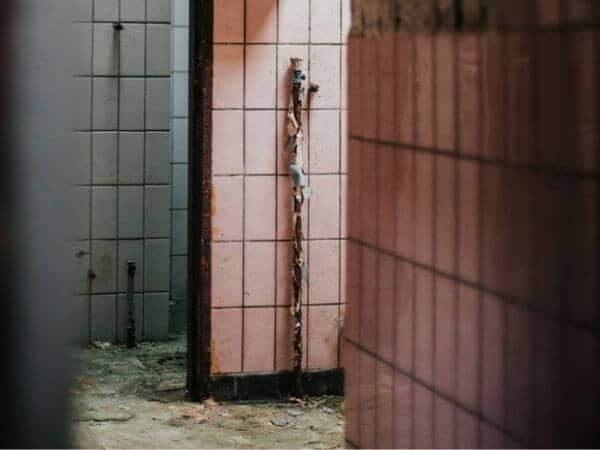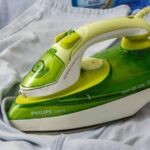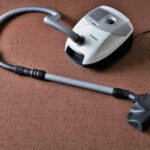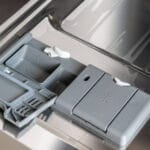Mold is hardly the kind of dirt anybody likes to deal with. However, it is also impossible to completely stay away from, because it is part of the natural environment. Ideally, the disgusting gunk thrives in places with moisture thereby making bathrooms, sinks, and toilets the primary culprits.
Besides the common black and green molds, a different type that you are likely to come across in your home is pink mold.
What is Pink Mold in the Shower?
If you have seen pink to reddish mold/mildew-like thing growing in your bathroom, you are actually dealing with something else. To your advantage though, the slime is fairly harmless. It comprises of a bacteria that is known as Serratia marcescens.
The biofilm is common all over the world but thrives in moist areas. Since bathrooms are rich in moisture and humidity, they provide the ideal environment. Further, the presence of soapy residues creates a feeding zone for Serratia marcescens.
Serratia marcescens is harmless to a healthy human being. All the same, it should be handled with care because it can expose people with low immunity to conditions such as urinary track infections.
As bothersome as it is, Serratia marcescens is quit difficult to eliminate permanently. Primarily, this can be attributed the manner in which it spreads. The bacteria is airborne which means that cleaning bathroom walls and curtains will not address the problem comprehensively.
After cleaning the walls, curtains and every other place in the room, the biofilm begins to grow back after some time.
How to Remove Pink Mold in the Shower
All the same, cleaning is the only way to go. It improves the hygiene of your space and protects your family from infections. There are several cleaning approaches. Some provide a short term solution whereas others provide results that last relatively longer
Method I: Baking Soda and Hydrogen Peroxide

Baking soda and hydrogen peroxide are both used as DIY cleaning agents separately and together. In this recipe, they work together with dish soap to cut through the bacteria that is thriving in your bathroom, toilet or tub.
What You Will Need
- A cup baking soda
- 3 tablespoons hydrogen peroxide
- Dish soap
- A small bowl
- A scrubbing sponge or bristle brush
- Squeegee
- A spray bottle
- 1 cup vinegar
- 1 cup water
- Rubber gloves
- Protective eyewear
- A mask
Instructions
Step 1: Combine baking soda, hydrogen peroxide and dish soap in a small bowl and set aside. Stir the ingredients to form a consistent paste. Make sure that the paste is not too thin or too thick.
Step 2: Mix water and vinegar in the ratio of 1:1 in a spray bottle. Shake well and set aside.
Step 3: Wear your protective gear. Begin by putting on the eyewear and the face mask. Finish up by putting on the gloves.
Step 4: Take the brush and the baking soda paste and begin to clean the affected surface. Apply the solution to the surface and scrub until the pink color disappears. Begin from the highest point and move downwards.
Step 5: Rinse thoroughly with running water. Preferably, use a shower spray or attach a pipe to the bathroom tap. This will allow you use water generously so that you can away the bacteria thoroughly.
Step 6: Use a squeegee to remove excess water from the walls.
Step 7: Spray all the cleaned areas with the vinegar and water solution. Vinegar helps with killing germs thereby slowing up the return of the bacteria.
Method 2: Water and Vinegar
What You Will Need
- A cup of vinegar
- A cup of water
- Rubber Gloves
- Protective eyewear
- A scrubbing sponge or bristle brush
- A mask
- A spray bottle
- A clean microfiber cloth
Instructions
Step 1: Combine water and vinegar in a spray bottle in the ratio of 1:1. Shake the solution well for proper mixing.
Step 2: Wear protective gear and spray the solution generously to the affected areas. As for walls, begin from the highest point downwards to avoid wasting a lot of product.
Step 3: Let the solution sit on the walls for at least 15 minutes. Soaking enhances the speed at which the biofilm comes off when you begin to scrub.
Step 4: Use a bristle brush to scrub thoroughly. You can apply a few drops of dish soap on areas that require a lot of elbow grease.
Step 4: Rinse thoroughly with running water and use a clean microfiber cloth to wipe dry.





